Operation Overlord & Portland Harbour….A Diving Mystery!
1944 and the allies are massing on the South Coast to take the offensive to Hitler on the shores of the Normandy Beaches. Preparations are as covert as possible and deception is the name of the game, there are battalions of “funnies”…… inflatable tanks and lorries, being placed along the Eastern coast ports and disguised in just enough manner as to attract attention from the Luftwaffe and from any German sympathisers engaged in spying operations along the coastal counties
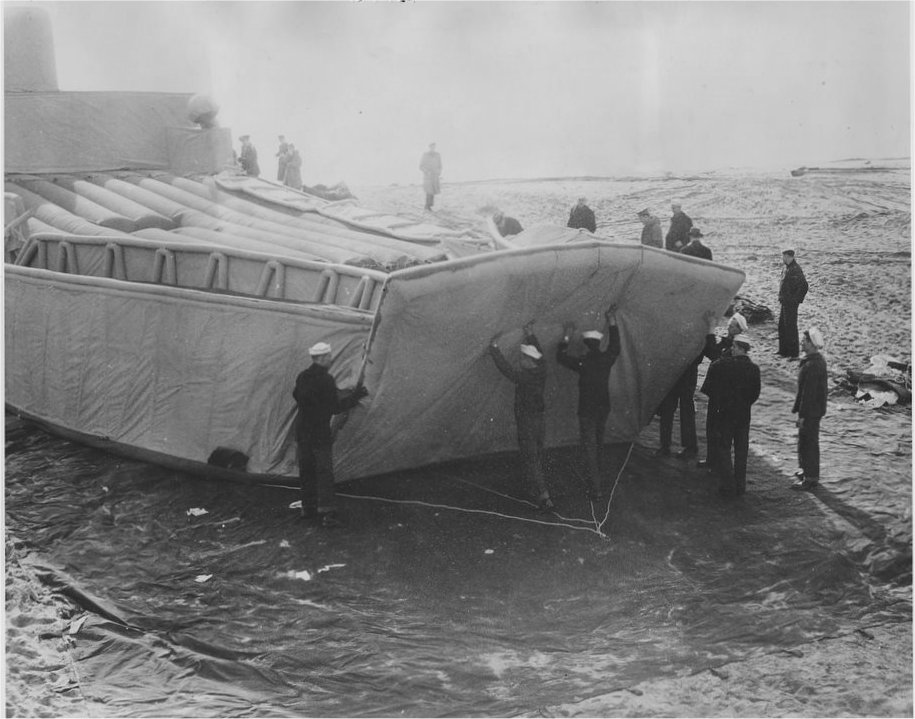
Operation Fortitude and Bodyguard saw misinformation passed to the Germans and other deceptions, like the 255 Dummy landing craft made from wood and tarpaulin, and inflatables made from rubber, assembled at Dover to give the impression Dover would be the disembarkation port. Seen close up the dummy landing craft are obviously unconvincing, but from a Luftwaffe pilots perspective they were very believable…..
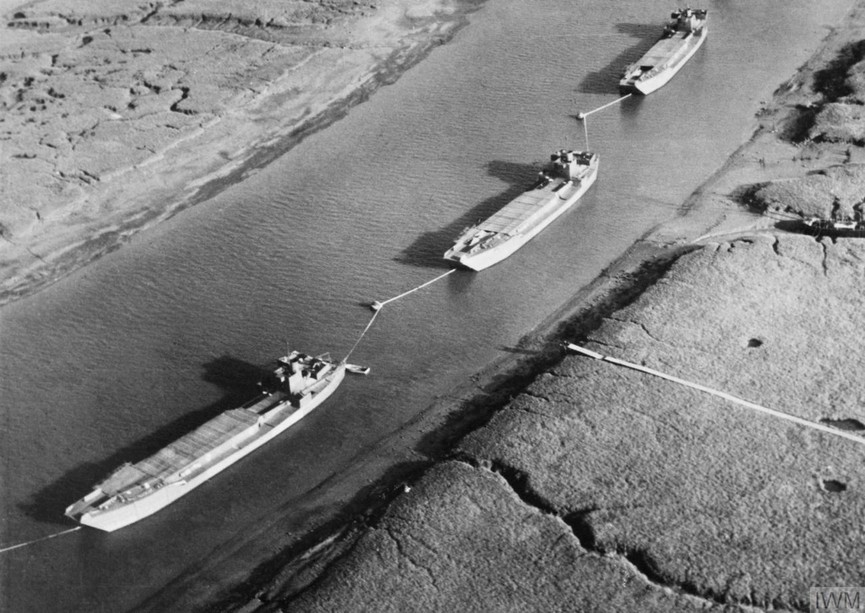
Churchill and the allies, with Montgomery commanding the British and the allies, and Eisenhower commanding the US Army and the Canadians, are building huge invasion forces and transportation caches in the Southern ports and surrounding areas, to await the perfect moment to cross the Channel and begin the invasion of Europe. Across the 20 odd miles of the English Channel, Erwin Rommel has taken charge of the defences and fortifications on the French coastline, a wall of gun emplacements and artillery backed with tens of thousands of German troops, they know the Allies are coming, they just don’t know exactly when…..or where
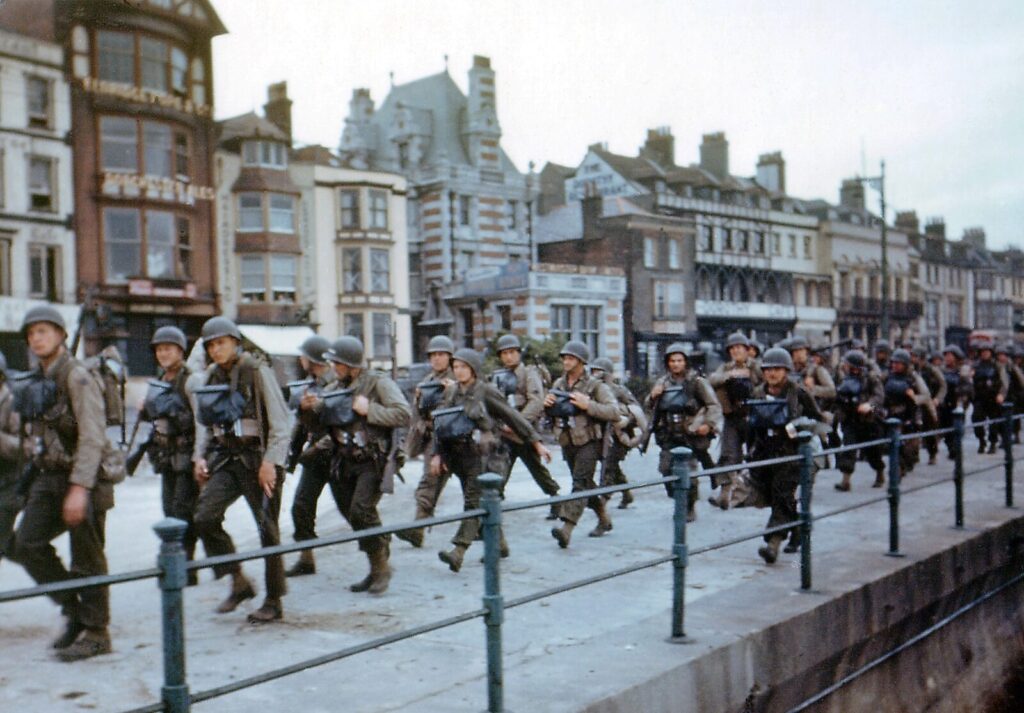
In Weymouth and Portland, by June of 1944, the seaside towns have been transformed by the tens of thousands of US troops massing for the short trip across the Channel. The harbours are lined with ships and transports, supplies and ammunition arrive by train and lorry, lines of supply from all over the world, streaming in to ensure the invasion bridgehead can be sustained……..and it just keeps coming. Churchill and Eisenhower must have been terrified the Germans would discover where the troop concentrations were the highest, where the landing craft and support auxiliary craft were berthed, and when the invasion was planned. Truth be known there was probably little Hitler and his generals could do, air superiority was firmly in the hands of the RAF, strengthened by the fighters and bombers of the USAF that had been flying sorties and “thousand bomber raids” on Hamburg and Berlin since 1943. But there was always the chance that, with enough intelligence and enough will, the German Luftwaffe could have a disastrous effect on the landing plans being thrashed out under Whitehall
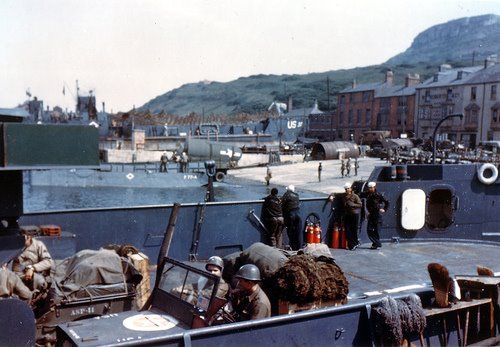
The planned allied actions would involve all of the ingenuity of the combined nations and some of the most innovative problem solving seen globally to that date, the Mulberry’s, Whales and floating roadways have been examined in detail elsewhere in this blog, I won’t repeat them here. This piece is where tribute is paid to those who landed on the beaches themselves, those who transferred from troop-carriers over the side, fully kitted, hanging from rope nets slung for the purpose of access to the smaller, shallow draughted landing craft assault (LCA’s). Alongside them those who sailed ashore in Sherman duplex drive tanks and the “Hobart Funnies”, the mine-flail carrying Sherman’s from landing craft “Tank” vessels (LCT’s), and the myriad of other small work-horse landing craft, that delivered tens of thousands to their destiny on the shores of Normandy and the beaches of Utah (Pouppeville), Omaha (St Laurent Sur Mer) Gold (Arromanches) Juno (Courseulles) and Sword (Ouistreham) from 06:30 on the 06th June 1944
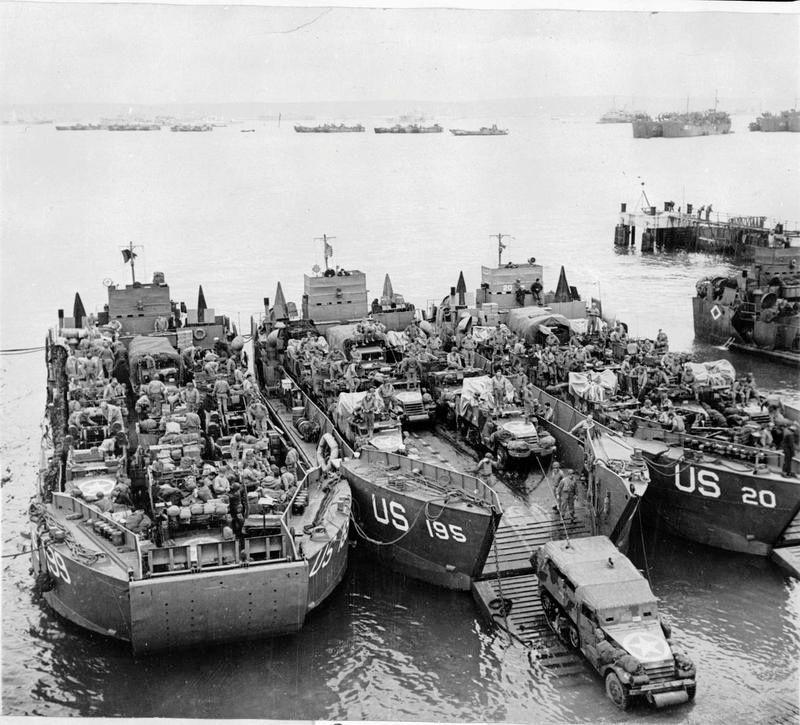
The various landing craft types in June of 1944 were varied and classified briefly and curtly in alpha-numerics, in typical military style, by their function, Landing Craft Assault: LCA, Landing Craft Infantry: LCI, Landing Craft Tank: LCT….etc. These Landing Ships and their smaller Landing Craft would become iconic in the months to come, film of those disembarking into the tiny “Assault” and larger “Infantry” craft would roll down history, in hundreds of hours of film, of those giving their lives to liberate lands they had never seen before and to throw back the German invaders once and hopefully for all of time to come……
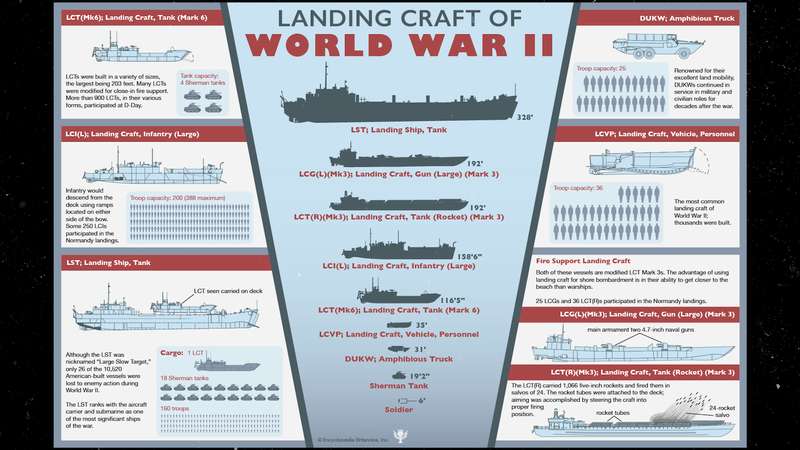
One of these heroic little craft seemingly ended up at the base of the breakwater in Portland, becoming a popular dive attraction, found not far from and along with the bombardon and its tug, which have already been covered elsewhere in this dive blog. So which type of these brave craft was it that fell before the main event, ending up at the base of the harbour wall in Portland in June of 1944? The wreck is supposed to be a “Landing Craft Tank, one of the LCT variants according to local sources and definitely, it is said, a WWII wreck, although there are no known written reports to back that assertion that I have seen. The LCT silhouette seems to be somewhat similar to an LCT Mark 5 and the profile, as seen on the side-scan imaging is certainly similar to the Mk 5. Now despite the shape and size being a “fair” indication for a Mk 5, this doesn’t make a lot of sense, firstly the length isn’t quite right, the measurements are 27m for the Portland landing craft (LCT Mk5 length c36m) and there are no LCT Mk5’s directly noted as lost in Portland, the only losses in the LCT register being noted as “lost in operation Neptune, Normandy Landings, N France, June 6, 1944” (Online resource: naval-history.net/WW2BritishLosses4Amphib.htm Accessed 13/03/2021) Now that doesn’t mean whoever registered the loss didn’t lack any more information than the operation title and intended theatre, it just seems unlikely that the only 4 Mk 5’s lost (2049, 2229, 2307 and 2498) were not noted as “Lost in Home Waters” as was the usual entry for those floundering or destroyed this side of the Channel
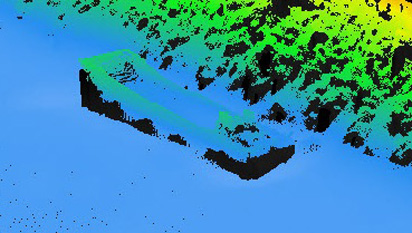
The LCT lost in Portland was supposed to have gone down in 1944, so the dates for all Normandy LC variants “fit” but the profiles were distinctly different, or the size gives the vessel away. The side-scan profile shows a wide flat drop ramp with little curvature to the bow, vaguely consistent with a MkV LCT, the only other likely variant is an LCT MkV(A) or “Armoured” which you can see from the photo below of LCT MkV(A) 2012 as used by the 100th Flotilla with British Commando units (5th Independent Battery Royal Marine Armoured Support Group) who arrived on Sword Beach June 06th of 1944 in zones Queen Red & Queen White. If you look at the line of the Gunwales from Drop Ramp to Bridge (front bit to command bit) you will see the lines look similar to that shown on the side-scan image, and that the remains of the Bridge in the side-scan image resemble the layout of the Mk V with the wheelhouse “gone”. However close inspection of the side-scan sonar would reveal the Drop Ramp meets the gunwale and within a metre or so there is a reduction of height, which then seems to descend back to the bridge area evenly, although the Portland landing craft seems to have come to rest slightly stern down, as if the bow is raised on the sea bed
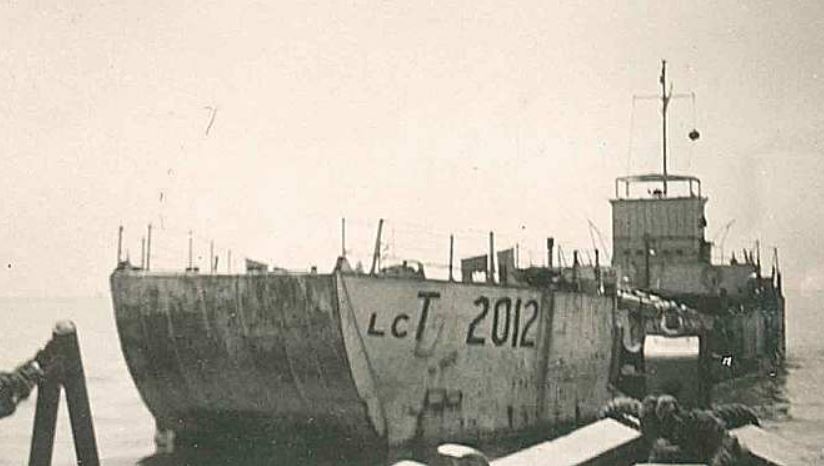
Now I tried every avenue I have to determine exactly which type of landing craft sits at the base of the breakwater at Portland, I even disturbed Budgie from his Covid 19 induced reverie out in Tulum in Mexico. In conversation, it turns out Budgie knew of several landing craft in the harbour in various locations, some of them old wooden “Higgins Boat” types, long ago rotted away to remain only as engines and transmissions on the sea floor, but at least one more similar to LCT Mk5 inside, and remarkably one also outside the breakwater. Although these were present, as Budgie put it, with “little left of them that we could take a “customer” to see, we used them for Lobster mostly”, so it is unlikely there is much more to be gained as insight from local knowledge either. Budgie also pointed out most of the fishermen and “older guys” of the time, from whom Budgie got most of his information from, have long since passed
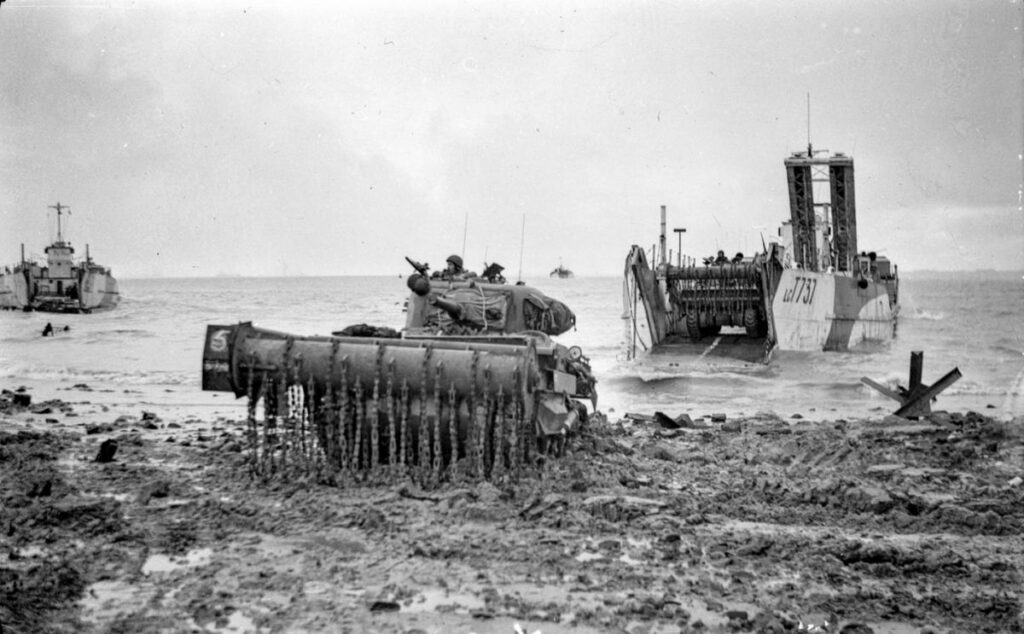
I have no measurement for the LCT MkV (A)’s but I do have dimensions for the actual LCT at Portland which was measured by a diver (Becky9) posting on the Royal Navy Research Archives back in May of 2014 “….wheelhouse roof is missing, it’s around 27m long, 6m wide. It has two engine bays…..” (Online Resource: Becky9 in “Post war Landing Craft – Portland Harbour Landing Craft Wreck” www.royalnavyresearcharchive.org.uk/SMF/index.php/topic,586.0.html Accessed 13/03/2021). That would make it far more likely the LCT at Portland was a “variant” as the length (around 27m) is at odds with most LCT Mk V’s which were 34.8m x 10m according to dimensions quoted in The Pacific War Online Encyclopedia (www.pwencycl.kgbudge.com/L/c/LCT_class.htm), this pushes us more towards a later landing craft perhaps, and Becky9 has a theory which has some merit. Becky believes the Portland LC is a Vosper Thorneycroft prototype from 1964, an LCM(9), specifically L3507 which is down as “stricken 1980’s” in the navypedia.org web-site (On-Line resource: navypedia.org/ships/uk/brit_aws_lcm9.htm Accessed 13/03/2021) the dimensions are perfect, quoted length 27.5m beam 6.80m and powered by two Paxman Diesel Engines (twin prop). Even Budgie admitted there was no direct evidence the landing craft at the breakwater was a 1944 wreck, just that it had always been “known locally” as a war wreck
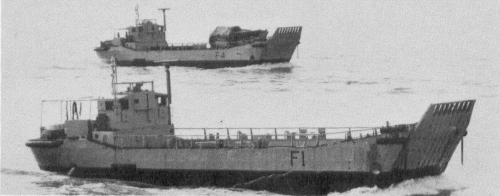
The clear drop from the Ramp to the gunwale can be seen on the photo of L3507 as can the high ramp, which protrudes well above the gunwale where they meet. On the prototype during its trials at Instow, (a place I know very well, having undertaken winterised and waterproofing trials with “ATTURM”, the “Amphibious Trials & Training Unit Royal Marines” as it was known when I was there), the bow Drop Ramp was level with the gunwales as can be seen in the video link embedded below. It was not uncommon to see the bow ramp changed for one with longer “reach”, (that was happening even in the war years), so the trial bow ramp could easily have been switched for one that extended above the gunwales. This fits well with the silhouette of the side-scan, which indicates a very close resemblance, and also shows a closer fit with what remains of the bridge, as the small bridge “wings” port and Starboard seem to show in the side-scan albeit with the roof on both sides missing. It would not take a leap of faith to think the roofs were thin steel, which would have quickly perished even if the LCM only went down sometime after the 1978 photo….. What doesn’t fit so well with Becky9’s proposal is how a disparity of some 34 years was “lost” in local folklore, (there were no tales of a later wreck, Budgie was explicit on that point) especially considering L3507 was described in admiralty records as “stricken”, a naval term for “removed from the records”, not a term used for “sunk”, and, as such, that means she was still afloat at least until 1980, nor does it explain how such a recent wreck could possibly have been believed to have been a WWII era loss……
You can watch the ATTURM Instow Trials of LCU L3507 here:
https://www.iwm.org.uk/collections/item/object/1060044448
Anyhow, when I dived the Portland Landing craft I had little curiosity in regards to which type it was and to be honest the little craft was kind of underwhelming: “13 07 97 Portland Dorset Landing Craft: Very low viz made this eerie but still little to see – the historic interest is there & the wheelhouse is still just about in one piece but the wreck is barren & only of limited interest as it is largely a skip with no cargo & a hut on it. Buddy Michael 12L Nitrox 32% 50% Deco Dry Bag”

I am embarrassed by my curt treatment of the little landing craft at the time, I can see why the interest just wasn’t firing me up on the day, however I have always been fascinated by the war years, my mother having told me of her time as a child in Liverpool and the bombing raids, the gas-masks and the privations of rationing. I don’t really know why this pivotal type of craft, with its historic role in the freeing of half the globe from Nazi oppression, didn’t spark more in me? Perhaps it was because there was, in truth, little to the actual wreck itself, it wasn’t a complex piece embedded a foot or so in the mud in Portland harbour, it really was little more than a skip with a hut welded to it, but to those advancing under fire onto beaches it must have been a sleigh-ride into Hell itself…..
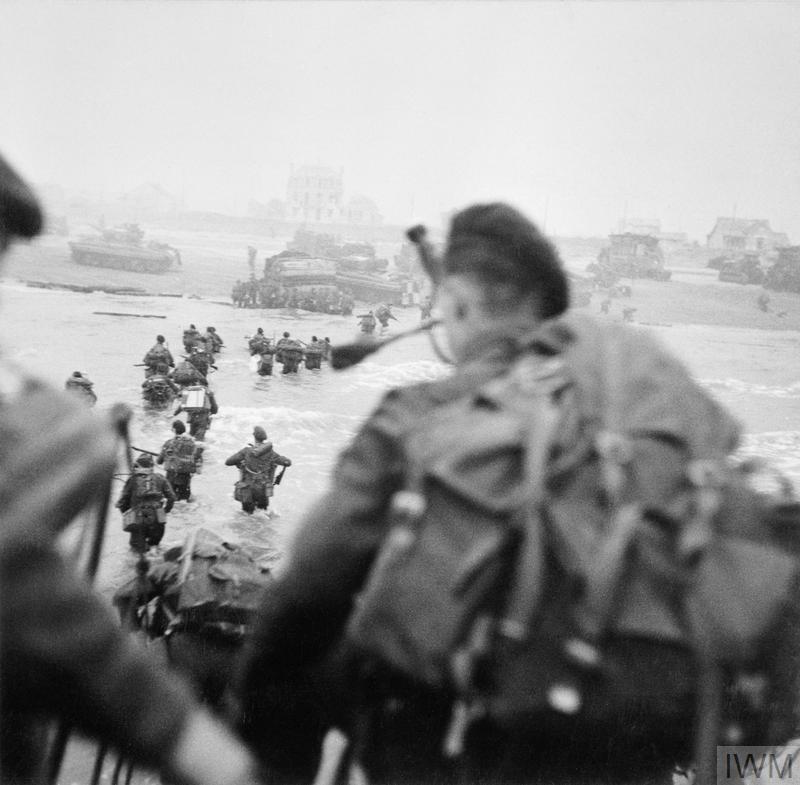
In truth, until someone can make “positive” identification of the era and type of the landing craft at Portland, she seems doomed to be a mystery, like almost every one of her peers during the war years, given the most cursory of references in naval records and, in all but one case it seems, not even investigated when reported lost……. a mysterious, if ignominious end

Hi there Deep Blue!
I have just come across your blog & am interested in identifying this Landing Craft.
Like you, I have dived it a few times & not given it much thought, before moving on to the Bombadon unit.
However, I have dived the 2 smaller Landing Craft opposite the building on the North breakwater & now am on a mission to identify them all.
Becky9 thinks it is L3507, but that has got large ‘drainage holes’ just behind the bow ramp…….. Are you sure that this one has got them ( I have not noticed any!).
I think the main clue to its ID is that the 2 engines are ARFT of the wheelhouse…. none of the WW2 Landing craft seem to have this configeration.
Have you had any further ideas or references to it’s identity ?
All the best G Adams
Giles,
Hi there and thank you for your interest. I have to say I see no personal way to progress the investigation as I no longer live in the UK so will have no way (for the foreseeable future) to dive the landing craft or what remains of her. I did what I could from the photos and the material I could access but it still, as the piece says, remains a mystery. I encourage you to take this as far as you can get, dive her for as long as you can and measure up what is there, look for any “type” identification that might be possible and perhaps think on this, it took me 4 years of quite intense work before a lucky break helped me categorically confirm Protector III was MMS 251…….Good Luck & please keep me posted during your progress! Dive Safe……
Hi there Colin
Thanks for the info & encouragement!
I’ve tried both Poole & Weymouth museums to no avail, so am off to the Dorset History Section tomorrow to check their archives.
It seems that as LCs were so numerous ( & their activities classified), it is hard to get any real data on specific wrecks……. but that will not stop me from trying!
I will keep you posted, Cheers Giles
Giles,
I came across the same issue, there are very few solid sources of evidence and although there is plenty of local “hearsay” even the sinking dates are not truly verifiable, the trouble is there were between 4 and 6 “landing Craft” sunk round Portland harbour including a couple outside the walls. Dates become blurred as to which sank when, and that complicated my search. The other issue is “type” as they were frequently modified without much recording of detail, hence the “scuppers” might not be a “true” type indication, I also found they frequently changed out the drop fronts across variants too. Add to that the poor recording of what serial number was in which location and the frequently changing crews and you have your work cut out for you…….it’s do-able but I found I would need a good deal more measurements to achieve anything more than I put in the piece, best of luck and keep at it, I’m sure you will get there where I failed and please do keep me posted on your progress!